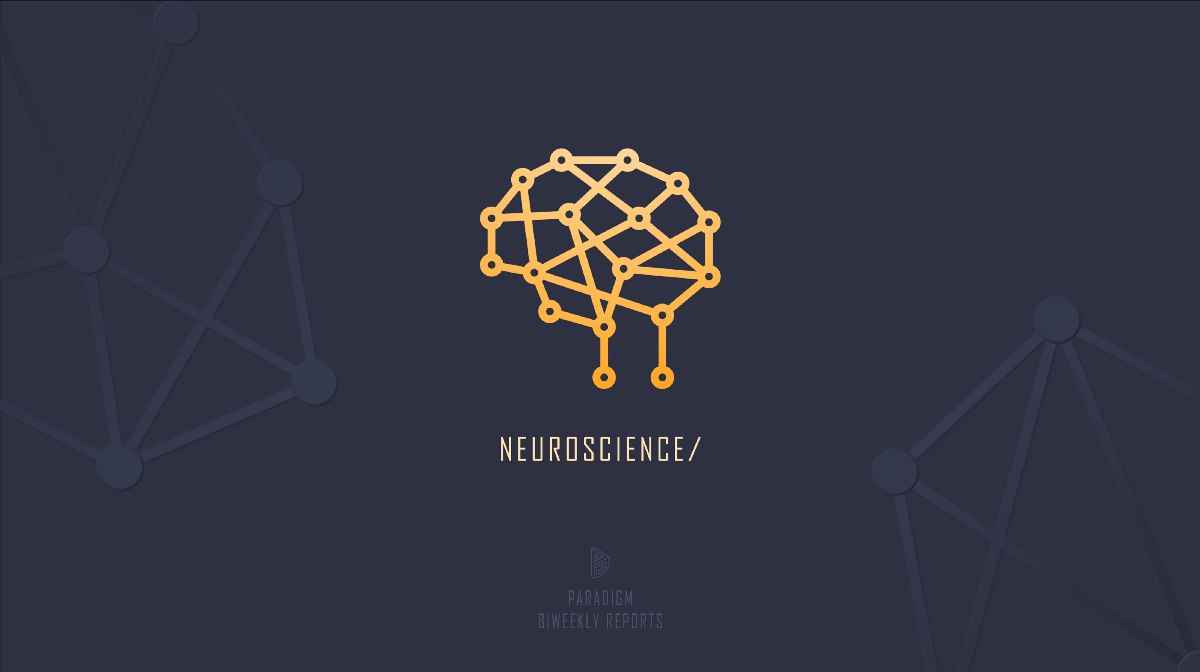AF
Size: a a a
2020 August 04
да)) сейчас каждый день какие-либо утечки. То ли еще будет
AF
недавно об этом говорили
AF
Амет Альчиков
Доброго дня Алексей Вам! Доброго дня друзья! Как не искал электронный вариант, не нашел!
Я просто помню, кто-то в чате спрашивал про нее. Вот, получается, что у меня их 2. И если кому-то ну жесть как приспичило ее заиметь, то могу как будет возможность ее отправить по почте.
2020 August 05
АА
Доброй ночи Алексей! Буду очень признателен Вам Алексей!
เ
«Коммерсант» вбросил информацию о том, что якобы персональные данные россиян, участвовавших в электроном общероссийском голосовании по внесению поправок в Конституцию, теперь продаются в даркнете:
«Хакеры нашли применение утекшим паспортным данным участников электронного голосования по поправкам к Конституции. На тематических форумах база на 1,1 млн строк продается по $1,5 за каждую и пользуется спросом, так как позволяет обогатить уже существующие подборки персональных данных».
На самом же деле издание путает персональные данные и данные, прошедшие процесс анонимизации, которые персональными считаться не могут. Как и в случае с июльской «утечкой» на продажу выставлены просто номера паспортов, которые нельзя идентифицировать с из владельцами. Кроме того, руководитель Общественного штаба по контролю и наблюдению за общероссийским голосованием Илья Массух отметил, что многое номера паспортов принадлежать людям, которые вообще не принимали участия в голосовании:
«Мы выделяли несколько сэмплов, которые выставлены к покупке, выяснилось, что данные паспортов, фамилии абсолютно не совпадают, таких людей не было на электронном голосовании. Я бы сказал, что их и в природе нет. Во всяком случае, несколько примеров, которые к нам попали, они такими оказались».
«Хакеры нашли применение утекшим паспортным данным участников электронного голосования по поправкам к Конституции. На тематических форумах база на 1,1 млн строк продается по $1,5 за каждую и пользуется спросом, так как позволяет обогатить уже существующие подборки персональных данных».
На самом же деле издание путает персональные данные и данные, прошедшие процесс анонимизации, которые персональными считаться не могут. Как и в случае с июльской «утечкой» на продажу выставлены просто номера паспортов, которые нельзя идентифицировать с из владельцами. Кроме того, руководитель Общественного штаба по контролю и наблюдению за общероссийским голосованием Илья Массух отметил, что многое номера паспортов принадлежать людям, которые вообще не принимали участия в голосовании:
«Мы выделяли несколько сэмплов, которые выставлены к покупке, выяснилось, что данные паспортов, фамилии абсолютно не совпадают, таких людей не было на электронном голосовании. Я бы сказал, что их и в природе нет. Во всяком случае, несколько примеров, которые к нам попали, они такими оказались».
2020 August 06
NK
«Коммерсант» вбросил информацию о том, что якобы персональные данные россиян, участвовавших в электроном общероссийском голосовании по внесению поправок в Конституцию, теперь продаются в даркнете:
«Хакеры нашли применение утекшим паспортным данным участников электронного голосования по поправкам к Конституции. На тематических форумах база на 1,1 млн строк продается по $1,5 за каждую и пользуется спросом, так как позволяет обогатить уже существующие подборки персональных данных».
На самом же деле издание путает персональные данные и данные, прошедшие процесс анонимизации, которые персональными считаться не могут. Как и в случае с июльской «утечкой» на продажу выставлены просто номера паспортов, которые нельзя идентифицировать с из владельцами. Кроме того, руководитель Общественного штаба по контролю и наблюдению за общероссийским голосованием Илья Массух отметил, что многое номера паспортов принадлежать людям, которые вообще не принимали участия в голосовании:
«Мы выделяли несколько сэмплов, которые выставлены к покупке, выяснилось, что данные паспортов, фамилии абсолютно не совпадают, таких людей не было на электронном голосовании. Я бы сказал, что их и в природе нет. Во всяком случае, несколько примеров, которые к нам попали, они такими оказались».
«Хакеры нашли применение утекшим паспортным данным участников электронного голосования по поправкам к Конституции. На тематических форумах база на 1,1 млн строк продается по $1,5 за каждую и пользуется спросом, так как позволяет обогатить уже существующие подборки персональных данных».
На самом же деле издание путает персональные данные и данные, прошедшие процесс анонимизации, которые персональными считаться не могут. Как и в случае с июльской «утечкой» на продажу выставлены просто номера паспортов, которые нельзя идентифицировать с из владельцами. Кроме того, руководитель Общественного штаба по контролю и наблюдению за общероссийским голосованием Илья Массух отметил, что многое номера паспортов принадлежать людям, которые вообще не принимали участия в голосовании:
«Мы выделяли несколько сэмплов, которые выставлены к покупке, выяснилось, что данные паспортов, фамилии абсолютно не совпадают, таких людей не было на электронном голосовании. Я бы сказал, что их и в природе нет. Во всяком случае, несколько примеров, которые к нам попали, они такими оказались».
Опрошенные “Ъ” специалисты видят в происходящем опасную тенденцию: государственные IT-ресурсы защищены слабо, а чиновники не понимают важность информационной безопасности. «Утечки подобных баз данных участились,— подтверждает ведущий аналитик направления "Информационная безопасность" IT-компании КРОК Анастасия Федорова.— Связано это во многом с тем, что разработчики и заказчики таких баз не принимают должных мер по защите данных, считая, что в урезанном формате данные не представляют интереса для злоумышленников». Однако в ходе обогащения и сопоставления данных их значимость и критичность повышаются, указывает госпожа Федорова: «Собранные вместе ФИО, паспортные данные, номер телефона уже открывают возможности для фрода, социальной инженерии, целевого взаимодействия с инсайдерами, например, в телеком-компаниях».
М
Авиационному профайлингу посвящено мало открытых материалов. В основном – это ведомственные Минтрансовые методические материалы, описывающие инструменты транспортной безопасности.
В методичке, которую Вы можете скачать по ссылке – материалы по авиационному профайлингу Ульяновского Высшего авиационного училища. Они будут интересны не только профессионалам в области профайлинга, но и тем, кто часто летает, чтобы знать, как по идее, их должны опрашивать и, при необходимости, досматривать с целью выявления потенциально опасных лиц. Из методички Вы узнаете, как отличить этого потенциально опасного человека от среднестатистического.
Поскольку методичка «ведомственная», ссылка на нее будет работать 3 дня.
https://yadi.sk/i/mKC3hL803JVjmE
#профайлинг, #авиационныйпрофайлинг, #контроль, #безопасность
В методичке, которую Вы можете скачать по ссылке – материалы по авиационному профайлингу Ульяновского Высшего авиационного училища. Они будут интересны не только профессионалам в области профайлинга, но и тем, кто часто летает, чтобы знать, как по идее, их должны опрашивать и, при необходимости, досматривать с целью выявления потенциально опасных лиц. Из методички Вы узнаете, как отличить этого потенциально опасного человека от среднестатистического.
Поскольку методичка «ведомственная», ссылка на нее будет работать 3 дня.
https://yadi.sk/i/mKC3hL803JVjmE
#профайлинг, #авиационныйпрофайлинг, #контроль, #безопасность
М
Коллеги, у кого есть такая методичка? Поделитесь.
AF
Михалыч
Авиационному профайлингу посвящено мало открытых материалов. В основном – это ведомственные Минтрансовые методические материалы, описывающие инструменты транспортной безопасности.
В методичке, которую Вы можете скачать по ссылке – материалы по авиационному профайлингу Ульяновского Высшего авиационного училища. Они будут интересны не только профессионалам в области профайлинга, но и тем, кто часто летает, чтобы знать, как по идее, их должны опрашивать и, при необходимости, досматривать с целью выявления потенциально опасных лиц. Из методички Вы узнаете, как отличить этого потенциально опасного человека от среднестатистического.
Поскольку методичка «ведомственная», ссылка на нее будет работать 3 дня.
https://yadi.sk/i/mKC3hL803JVjmE
#профайлинг, #авиационныйпрофайлинг, #контроль, #безопасность
В методичке, которую Вы можете скачать по ссылке – материалы по авиационному профайлингу Ульяновского Высшего авиационного училища. Они будут интересны не только профессионалам в области профайлинга, но и тем, кто часто летает, чтобы знать, как по идее, их должны опрашивать и, при необходимости, досматривать с целью выявления потенциально опасных лиц. Из методички Вы узнаете, как отличить этого потенциально опасного человека от среднестатистического.
Поскольку методичка «ведомственная», ссылка на нее будет работать 3 дня.
https://yadi.sk/i/mKC3hL803JVjmE
#профайлинг, #авиационныйпрофайлинг, #контроль, #безопасность
У меня должно быть. Доберусь до компьютера, обновлю ссылку
AF
Амет Альчиков
Доброй ночи Алексей! Буду очень признателен Вам Алексей!
Амет, имелась ввиду печатная версия, электронной у меня самого нет. Помню, здесь еще весной кто-то спрашивал ее, но не помню кто(
М
Благодарю!
AF
Михалыч
Благодарю!
Нашел с телефона
М
👍
AF
Михалыч
👍
Я помню, что мне по этой теме больше понравилось вот это. Но уже эти файлы года 3 как не открывал. https://drive.google.com/file/d/1QpeBhhpF83z5nbRvQZ51GD7YAJyQsbQW/view?usp=drivesdk
М
Отлично! Спасибо!
2020 August 07
เ
"Окружающая обстановка, безусловно, его раздражает и выводит из себя, он находится в состоянии раздражения" — мы попросили графолога Дмитрия Смыслова проанализировать объяснительную, которую Ефремов писал для ФСИН. Имя автора эксперт не знал (все фамилии в документе мы скрыли)
"Ему склонны конфликты, к примеру склонность моделировать ситуации, с целью ведения наблюдения за поведением других людей и проверять их возможности, так же склонность делить мир и людей на два лагеря, хорошие и плохие. В ряде случаев это дает более адекватное понимание того, что происходит вокруг него.
Человек подвержен внушению при этом как со стороны других людей, так и со стороны самого себя. Склонен к конфликту с окружением"
@Lshot
"Ему склонны конфликты, к примеру склонность моделировать ситуации, с целью ведения наблюдения за поведением других людей и проверять их возможности, так же склонность делить мир и людей на два лагеря, хорошие и плохие. В ряде случаев это дает более адекватное понимание того, что происходит вокруг него.
Человек подвержен внушению при этом как со стороны других людей, так и со стороны самого себя. Склонен к конфликту с окружением"
@Lshot
SS
NT/ Brain implants improve accuracy whilst slashing power usage
- By tuning into a subset of brain waves, researchers have dramatically reduced the power requirements of neural interfaces while improving their accuracy — a discovery that could lead to long-lasting brain implants that can both treat neurological diseases and enable mind-controlled prosthetics and machines.
- The scientists who developed the first 3D multicellular brain organoid with a functional blood brain barrier now report that the model could be a promising platform to screen drugs that could work to control inflammation, which is at the center of many neurological conditions, like ischemic stroke.
- What if we were able to modify the negative effect of a returning memory that makes us afraid? A research group from the University of Bologna succeeded in this and developed a new non-invasive experimental protocol.
- A new study has shown that humans, mice and flies share the same fundamental genetic mechanisms that regulate the formation and function of brain areas involved in attention and movement control.
- Our brains have an upper limit on how much they can process at once due to a constant but limited energy supply, according to a new study using a brain imaging method that measures cellular metabolism.
- Researchers sought to determine whether a comprehensive and personalized program, designed to mitigate risk factors of Alzheimer’s disease could improve cognitive and metabolic function in individuals experiencing cognitive decline. Findings provided evidence that this approach can improve risk factor scores and stabilize cognitive function.
- Children who suffer trauma from abuse or violence early in life show biological signs of aging faster than children who have never experienced adversity, according to new research. The study examined three different signs of biological aging — early puberty, cellular aging and changes in brain structure — and found that trauma exposure was associated with all three.
- When we say someone has a quick mind, it may be in part thanks to our expanded cerebellum that distinguishes human brains from those of macaque monkeys, for example. High-resolution imaging shows the cerebellum is 80 percent of the area of the cortex, indicating it has grown as human behavior and cognition evolved.
- “Julich-Brain” is the name of the first 3D-atlas of the human brain that reflects the variability of the brain’s structure with microscopic resolution. The atlas features close to 250 structurally distinct areas, each one based on the analysis of 10 brains. German researchers led by Prof. Katrin Amunts have now presented the new brain atlas in the renowned journal Science.
- An early blood test could detect which babies deprived of oxygen at birth are at risk of serious neurodisabilities like cerebral palsy and epilepsy.
- Music training does not have a positive impact on children’s cognitive skills, such as memory, and academic achievement, such as maths, reading or writing, according to a study published in Memory & Cognition.
- Common green apple flavorant farnesene enhances nicotine reward in mouse models. The flavorant is also rewarding on its own. Researchers say with or without nicotine, flavored vapes, especially those containing farnesene, pose potential neurological risks, including addiction.
…And more!
#NT https://medium.com/paradigm-fund/nt-brain-implants-improve-accuracy-whilst-slashing-power-usage-2c3c35e8ce8d
Neuroscience biweekly vol. 12, 24th July — 7th August
TL;DR- By tuning into a subset of brain waves, researchers have dramatically reduced the power requirements of neural interfaces while improving their accuracy — a discovery that could lead to long-lasting brain implants that can both treat neurological diseases and enable mind-controlled prosthetics and machines.
- The scientists who developed the first 3D multicellular brain organoid with a functional blood brain barrier now report that the model could be a promising platform to screen drugs that could work to control inflammation, which is at the center of many neurological conditions, like ischemic stroke.
- What if we were able to modify the negative effect of a returning memory that makes us afraid? A research group from the University of Bologna succeeded in this and developed a new non-invasive experimental protocol.
- A new study has shown that humans, mice and flies share the same fundamental genetic mechanisms that regulate the formation and function of brain areas involved in attention and movement control.
- Our brains have an upper limit on how much they can process at once due to a constant but limited energy supply, according to a new study using a brain imaging method that measures cellular metabolism.
- Researchers sought to determine whether a comprehensive and personalized program, designed to mitigate risk factors of Alzheimer’s disease could improve cognitive and metabolic function in individuals experiencing cognitive decline. Findings provided evidence that this approach can improve risk factor scores and stabilize cognitive function.
- Children who suffer trauma from abuse or violence early in life show biological signs of aging faster than children who have never experienced adversity, according to new research. The study examined three different signs of biological aging — early puberty, cellular aging and changes in brain structure — and found that trauma exposure was associated with all three.
- When we say someone has a quick mind, it may be in part thanks to our expanded cerebellum that distinguishes human brains from those of macaque monkeys, for example. High-resolution imaging shows the cerebellum is 80 percent of the area of the cortex, indicating it has grown as human behavior and cognition evolved.
- “Julich-Brain” is the name of the first 3D-atlas of the human brain that reflects the variability of the brain’s structure with microscopic resolution. The atlas features close to 250 structurally distinct areas, each one based on the analysis of 10 brains. German researchers led by Prof. Katrin Amunts have now presented the new brain atlas in the renowned journal Science.
- An early blood test could detect which babies deprived of oxygen at birth are at risk of serious neurodisabilities like cerebral palsy and epilepsy.
- Music training does not have a positive impact on children’s cognitive skills, such as memory, and academic achievement, such as maths, reading or writing, according to a study published in Memory & Cognition.
- Common green apple flavorant farnesene enhances nicotine reward in mouse models. The flavorant is also rewarding on its own. Researchers say with or without nicotine, flavored vapes, especially those containing farnesene, pose potential neurological risks, including addiction.
…And more!
#NT https://medium.com/paradigm-fund/nt-brain-implants-improve-accuracy-whilst-slashing-power-usage-2c3c35e8ce8d








